Äîêóìåíòàöèÿ è îïèñàíèÿ www.docs.chipfind.ru
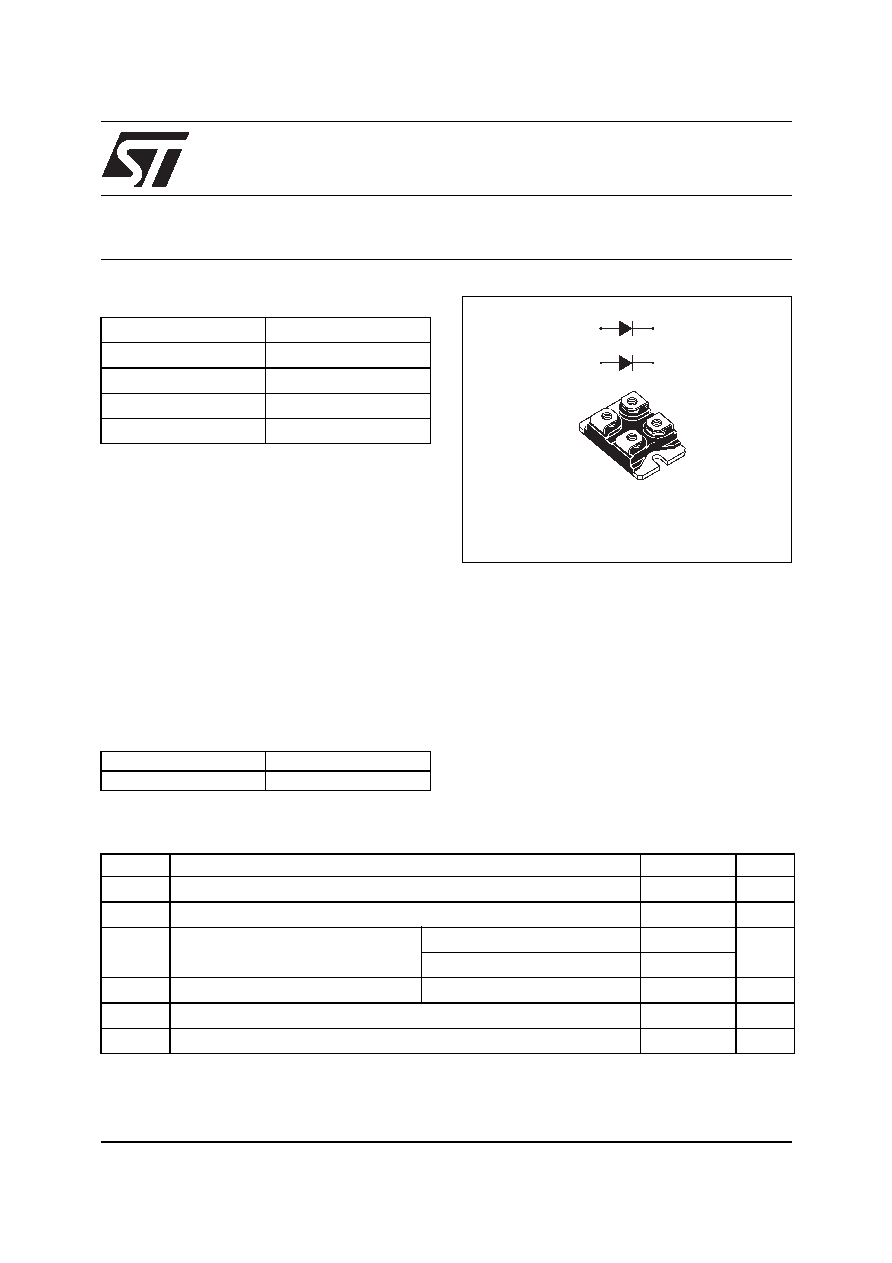
®
1/6
Table 1: Main product characteristics
I
F(AV)
Up to 2 x 120 A
V
RRM
400 V
T
j
(max)
150°C
V
F
(typ)
0.83 V
t
rr
(max)
60 ns
STTH20004TV1
Ultrafast high voltage rectifier
Table 3: Absolute ratings (limiting values, per diode)
Symbol
Parameter
Value
Unit
V
RRM
Repetitive peak reverse voltage
400
V
I
F(RMS)
RMS forward current
200
A
I
F(AV)
Average forward current
T
c
= 90 °C
= 0.5
Per diode
100
A
T
c
= 73 °C
= 0.5
Per diode
120
I
FSM
Surge non repetitive forward current t
p
= 10 ms sinusoidal
900
A
T
stg
Storage temperature range
-55 to + 150
°C
T
j
Maximum operating junction temperature
150
°C
A1
K1
A2
K2
K1
K2
A2
A1
ISOTOP
STTH20004TV1
October 2005
REV. 1
Features and benefits
Ultrafast switching
Low reverse current
Low thermal resistance
Reduces switching & conduction losses
Description
The STTH20004TV1 uses ST new 400V
technology and is specially suited for use in
switching power supplies, welding equipment,
and industrial applications, as an output
rectification diode.
Table 2: Order codes
Part number
Marking
STTH20004TV1
STTH20004TV1
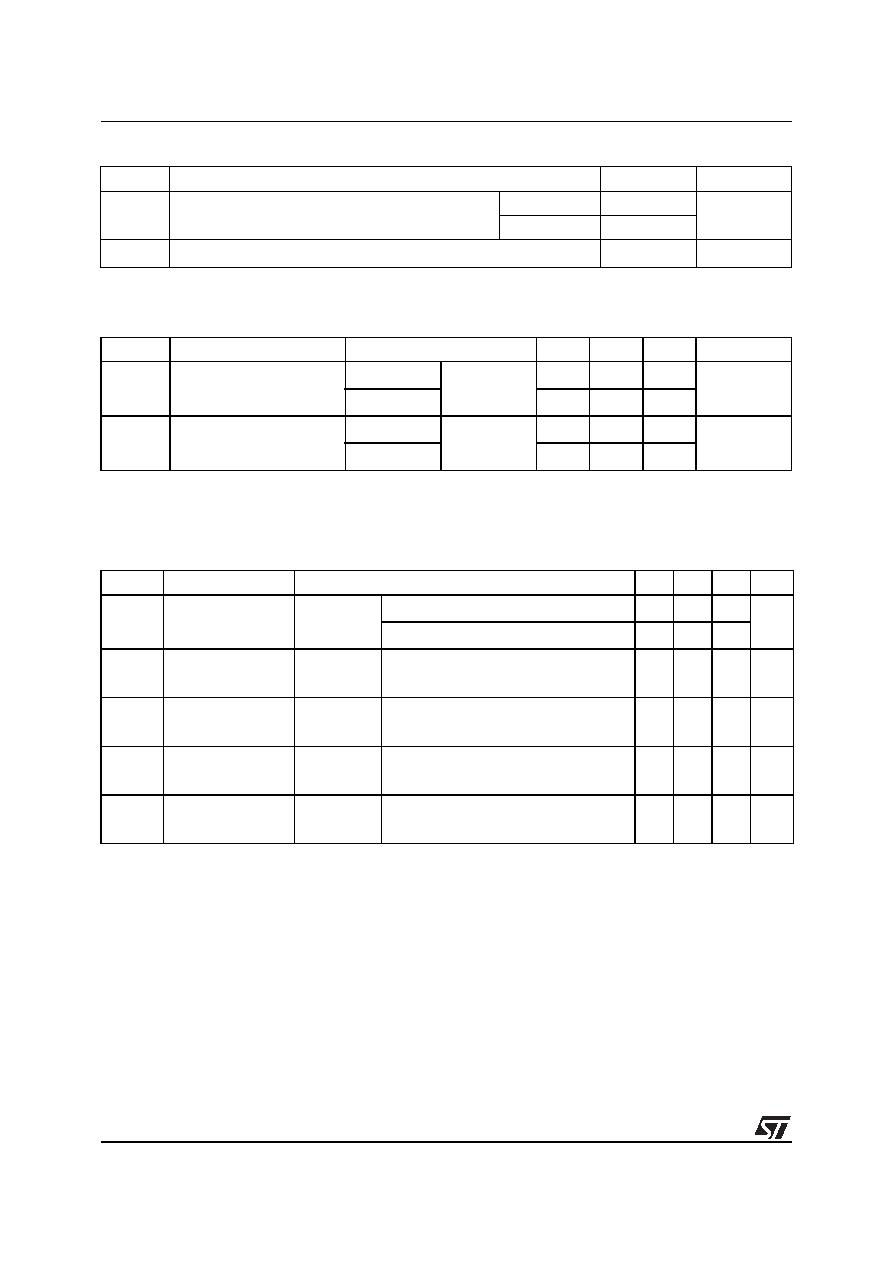
STTH20004TV
2/6
Table 4: Thermal resistance
Table 5: Static electrical characteristics (per diode)
Pulse test:
* tp = 5 ms,
< 2%
** tp = 380 µs,
< 2%
To evaluate the conduction losses use the following equation: P = 0.8 x IF(AV) + 0.002 IF
2
(RMS)
Table 6: Dynamic characteristics (per diode)
Symbol
Parameter
Value (max).
Unit
R
th(j-c)
Junction to case
Per diode
0.50
°C/W
Total
0.30
R
th(c)
Coupling
0.10
°C/W
When diodes 1 and 2 are used simultaneously:
Tj(diode 1) = P(diode 1) x Rth(j-c)(Per diode) + P(diode 2) x Rth(c)
Symbol
Parameter
Test conditions
Min.
Typ
Max.
Unit
I
R
*
Reverse leakage current T
j
= 25 °C
V
R
= V
RRM
100
µA
T
j
= 125 °C
100
1000
V
F
**
Forward voltage drop
T
j
= 25 °C
I
F
= 100 A
1.2
V
T
j
= 150 °C
0.83
1.0
Symbol
Parameter
Test conditions
Min Typ Max Unit
t
rr
Reverse recovery
time
T
j
= 25 °C
I
F
= 1 A dI
F
/dt = 50 A/µs V
R
= 30 V
75
100
ns
I
F
= 1 A dI
F
/dt = 200 A/µs V
R
= 30 V
45
60
I
RM
Reverse recovery
current
T
j
= 125 °C I
F
= 100 A V
R
= 200 V
dI
F
/dt = 100 A/µs
18
A
S
factor
Softness factor
T
j
= 125 °C I
F
= 100 A V
R
= 200 V
dI
F
/dt = 100 A/µs
0.4
t
fr
Forward recovery
time
T
j
= 25 °C
I
F
= 100 A dI
F
/dt = 200 A/µs
V
FR
= 1.1 x V
Fmax
800
ns
V
FP
Forward recovery
voltage
T
j
= 25 °C
I
F
= 100 A dI
F
/dt = 200 A/µs
V
FR
= 1.1 x V
Fmax
2.6
V
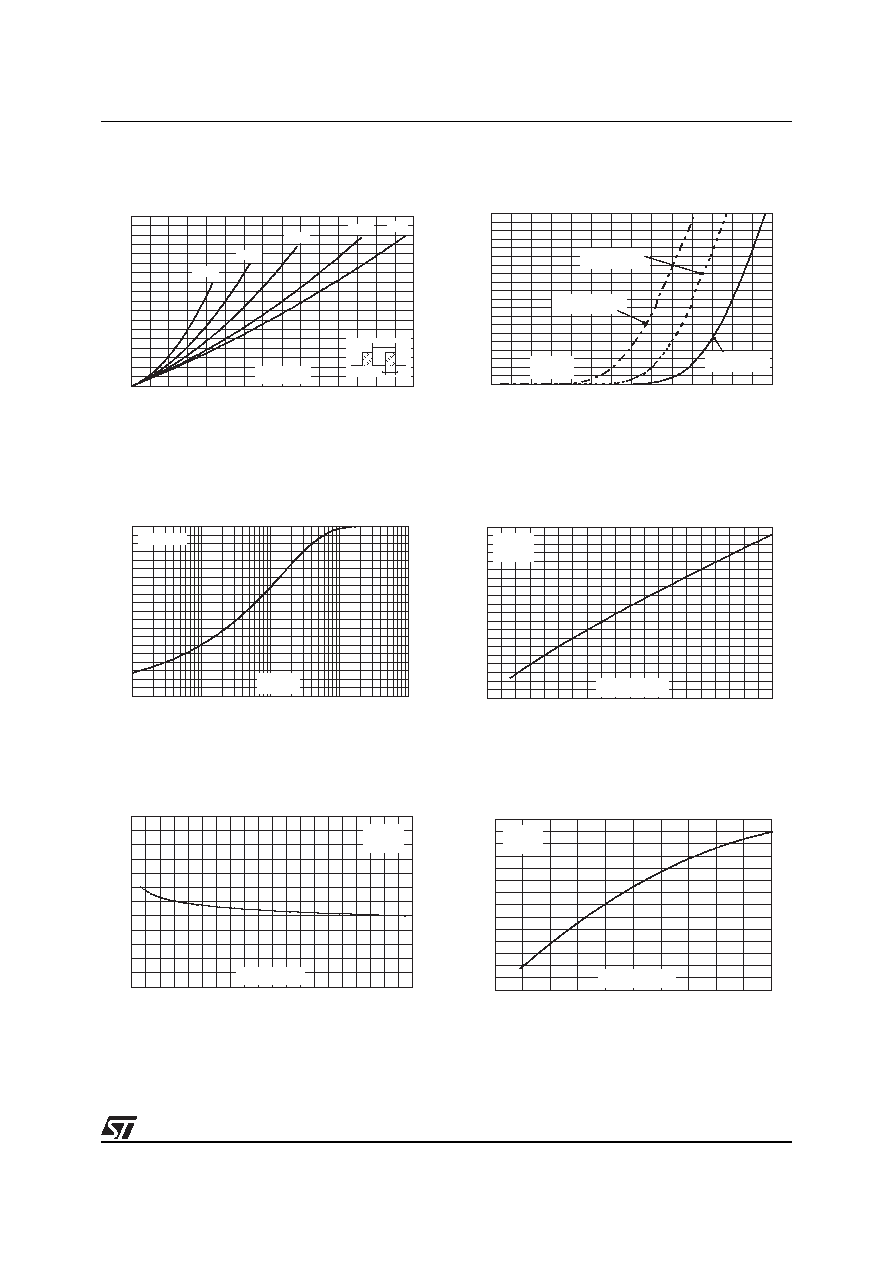
STTH20004TV
3/6
Figure 1: Conduction losses versus average
forward current (per diode)
Figure 2: Forward voltage drop versus forward
current (per diode)
Figure 3: Relative variation of thermal
impedance junction to case versus pulse
duration
Figure 4: Peak reverse recovery current versus
dI
F
/dt (typical values, per diode)
Figure 5: Reverse recovery time versus dI
F
/dt
(typical values, per diode)
Figure 6: Reverse recovery charges versus
dI
F
/dt (typical values, per diode)
0
20
40
60
80
100
120
140
160
180
0
10
20
30
40
50
60
70
80
90
100 110 120 130 140 150
P(W)
=0.05
=0.1
=0.2
=0.5
=1
T
=tp/T
tp
IF(AV)(A)
0
20
40
60
80
100
120
140
160
180
200
0.0
0.2
0.4
0.6
0.8
1.0
1.2
1.4
I
FM(A)
T
j
=25°C
(Maximum values)
T
j
=150°C
(Maximum values)
T
j
=150°C
(Maximum values)
T
j
=150°C
(Typical values)
T
j
=150°C
(Typical values)
VFM(V)
I
0.0
0.1
0.2
0.3
0.4
0.5
0.6
0.7
0.8
0.9
1.0
1.E-03
1.E-02
1.E-01
1.E+00
1.E+01
Zth(j-c) /Rth(j-c)
Single pulse
tP(s)
0
5
10
15
20
25
30
35
40
45
50
0
50
100
150
200
250
300
350
400
450
500
IRM (A)
I
F
=I
F(AV)
V
R
=200V
T
j
=125°C
dIF/dt(A/µs)
0
50
100
150
200
250
300
0
50
100
150
200
250
300
350
400
450
500
t rr (ns)
I
F
=I
F(AV)
V
R
=200V
T
j
=125°C
dIF/dt(A/µs)
0
500
1000
1500
2000
2500
3000
3500
0
50
100
150
200
250
300
350
400
450
500
Q
(nC)
I
F
=I
F(AV)
V
R
=200V
T
j
=125°C
dIF/dt(A/µs)
rr
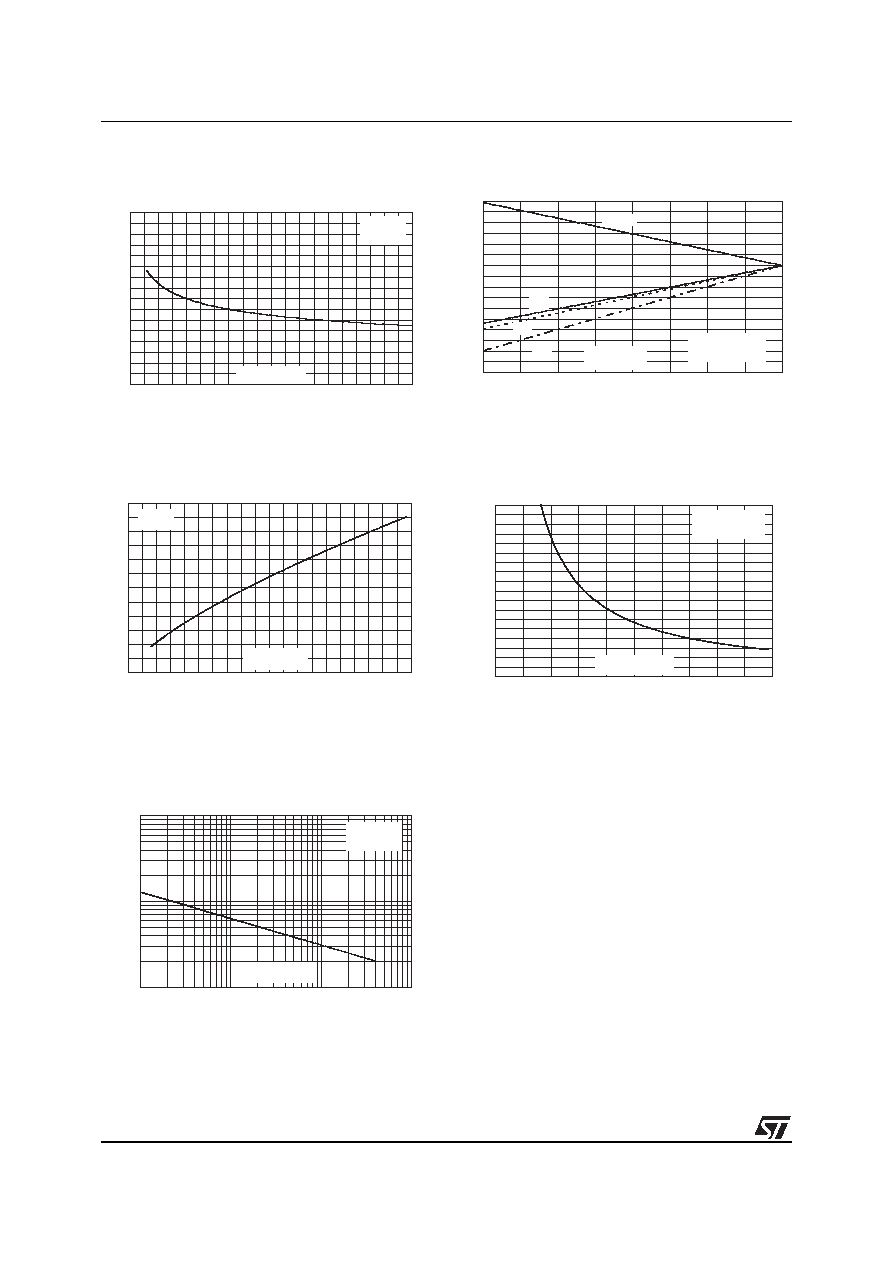
STTH20004TV
4/6
Figure 7: Reverse recovery softness factor
versus dI
F
/dt (typical values, per diode)
Figure 8: Relative variations of dynamic
parameters versus junction temperature
Figure 9: Transient peak forward voltage
versus dI
F
/dt (typical values, per diode)
Figure 10: Forward recovery time versus dI
F
/dt
(typical values, per diode)
Figure 11: Junction capacitance versus
reverse voltage applied (typical values, per
diode)
0.0
0.1
0.2
0.3
0.4
0.5
0.6
0.7
0.8
0
50
100
150
200
250
300
350
400
450
500
SFACTOR
I
F
< 2 x I
F(AV)
V
R
=200V
T
j
=125°C
dIF/dt(A/µs)
0.0
0.2
0.4
0.6
0.8
1.0
1.2
1.4
1.6
25
50
75
100
125
I
RM
S
FACTOR
I
F
=I
F(AV)
V
R
=200V
Reference: T
j
=125°C
Q
RR
t
RR
Tj(°C)
0.0
0.5
1.0
1.5
2.0
2.5
3.0
3.5
4.0
4.5
5.0
5.5
6.0
0
50
100
150
200
250
300
350
400
450
500
VFP (V)
I
F
=I
F(AV)
T
j
=125°C
dIF/dt(A/µs)
0
200
400
600
800
1000
1200
1400
1600
1800
0
50
100
150
200
250
300
350
400
450
500
tfr (ns)
I
F
=I
F(AV)
V
FR
=1.1 x V
F
max.
T
j
=125°C
dIF/dt(A/µs)
100
1000
10000
1
10
100
1000
C(pF)
F=1MHz
V
OSC
=30mV
RMS
T
j
=25°C
VR(V)
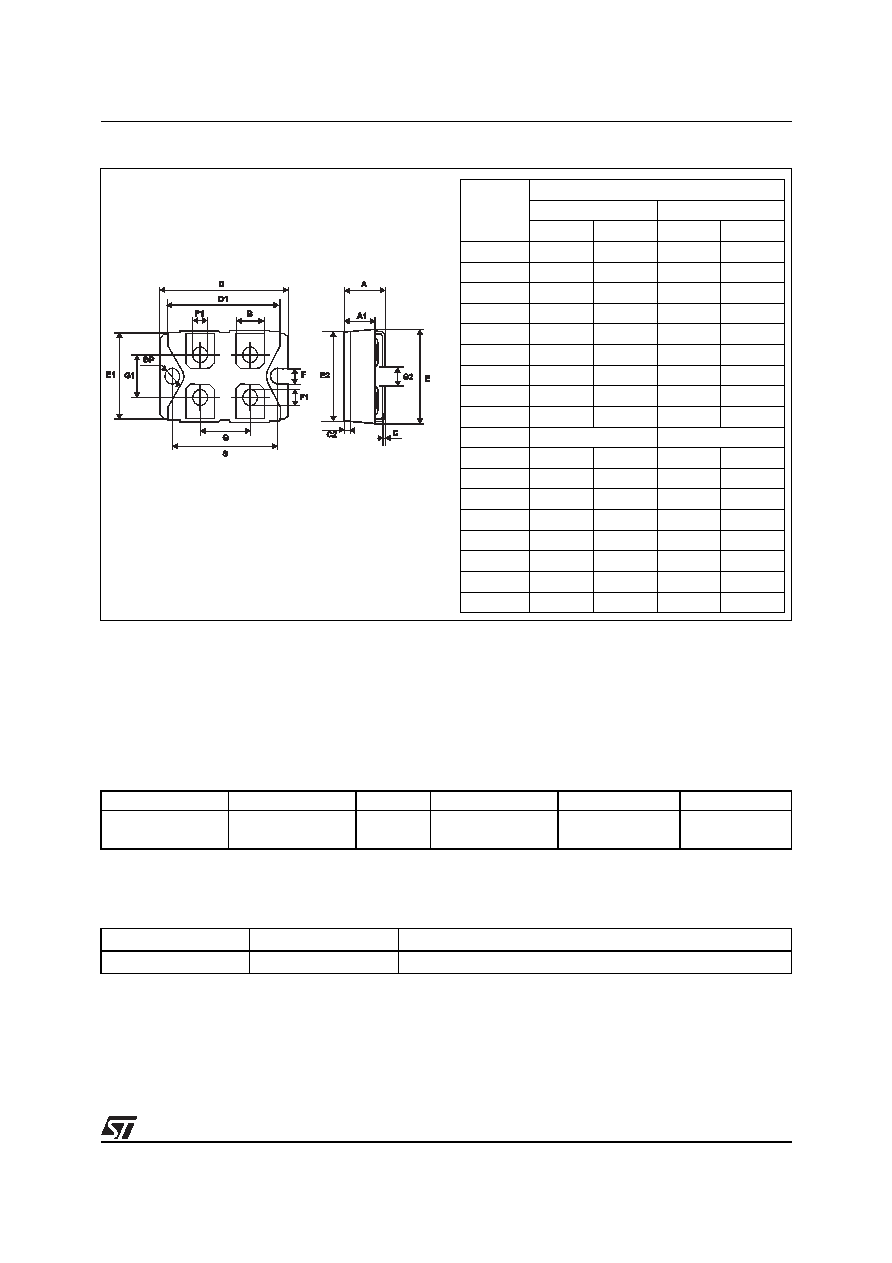
STTH20004TV
5/6
Figure 12: ISOTOP Package mechanical data
In order to meet environmental requirements, ST offers these devices in ECOPACK® packages. These
packages have a Lead-free second level interconnect . The category of second level interconnect is
marked on the package and on the inner box label, in compliance with JEDEC Standard JESD97. The
maximum ratings related to soldering conditions are also marked on the inner box label. ECOPACK is an
ST trademark. ECOPACK specifications are available at: www.st.com.
REF.
DIMENSIONS
Millimeters
Inches
Min.
Max.
Min.
Max.
A
11.80
12.20
0.465
0.480
A1
8.90
9.10
0.350
0.358
B
7.8
8.20
0.307
0.323
C
0.75
0.85
0.030
0.033
C2
1.95
2.05
0.077
0.081
D
37.80
38.20
1.488
1.504
D1
31.50
31.70
1.240
1.248
E
25.15
25.50
0.990
1.004
E1
23.85
24.15
0.939
0.951
E2
24.80 typ.
0.976 typ.
G
14.90
15.10
0.587
0.594
G1
12.60
12.80
0.496
0.504
G2
3.50
4.30
0.138
0.169
F
4.10
4.30
0.161
0.169
F1
4.60
5.00
0.181
0.197
P
4.00
4.30
0.157
0.69
P1
4.00
4.40
0.157
0.173
S
30.10
30.30
1.185
1.193
Table 7: Ordering information
Epoxy meets UL94, V0
Cooling method: by conduction (C)
Ordering type
Marking
Package
Weight
Base qty
Delivery mode
STTH20004TV1
STTH20004TV1
ISOTOP
27 g
(without screws)
10
(with screws)
Tube
Table 8: Revision history
Date
Revision
Description of Changes
18-Oct-2005
1
First issue




